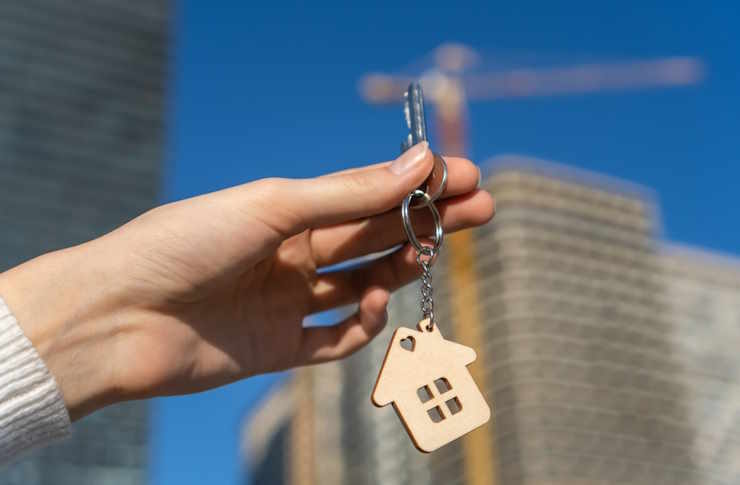Prefab Homes: Faster, Greener, High-Quality Housing
Prefabricated homes are transforming how we build and live. Manufactured in controlled factory settings and assembled on site, prefab and modular houses cut construction time, improve quality, and often lower costs. Learn about types, benefits, costs, and why prefab is a smart, sustainable housing choice.

Prefabricated housing is gaining momentum as a practical, modern alternative to conventional site-built homes. By shifting much of the construction work into factories, prefab methods reduce on-site labor, tighten quality control, and accelerate project timelines. As buyers and developers look for more efficient and eco-friendly solutions, prefab options — including modular, panel, manufactured, and kit homes — are becoming mainstream choices.
How the prefabrication process works
The workflow begins much like any building project: with planning and design, permits, and engineering. Once plans are finalized, the main difference is where the physical construction happens. Rather than building everything on site, wall panels, floor sections, roof trusses, and complete room modules are fabricated in a factory environment. Controlled conditions allow precise cutting, standardized assembly techniques, and integrated systems like plumbing and wiring to be installed before transport.
When components arrive at the property, site crews prepare the foundation and set utility connections. Large modules or panels are lifted into place using cranes, then joined, sealed, and finished. Because much of the labor has already occurred off-site, the on-site assembly phase is typically dramatically shorter — often measured in weeks rather than months. This compressed schedule can reduce exposure to weather delays and can speed up occupancy.
Advantages of choosing a prefab house
Reduced construction time is one of the most immediate benefits. Faster builds translate to lower on-site labor costs and fewer weather-related interruptions. The factory setting also facilitates consistent quality control: standardized processes, frequent inspections, and repeatable assembly can reduce defects and improve finished tolerances.
Prefab methods tend to be more resource-efficient. Materials are cut and used with greater precision, producing less waste than conventional framing. Many manufacturers prioritize sustainability by offering high-performance insulation, energy-efficient windows, and renewable or recycled materials. These choices often result in better thermal performance and lower utility bills for homeowners.
Other practical advantages include predictable scheduling, streamlined procurement, and the potential for tighter budgets. That said, final costs depend on design complexity, site conditions, transportation distances, and the level of interior finishes chosen.
Types of prefabricated homes
Modular homes are built as multiple three-dimensional modules in a factory, then transported and assembled into a complete dwelling. They offer considerable customization and often match or exceed the aesthetics and structural performance of traditional homes.
Panelized systems involve flat wall, floor, or roof panels that are shipped to the site and assembled like puzzle pieces. Panel homes provide design flexibility and can be finished quickly once erected.
Manufactured homes — sometimes called mobile homes — are constructed largely as finished units and transported whole to their final location. They are typically the most cost-efficient option but may offer less customization than modular builds.
Kit homes provide pre-cut materials and detailed instructions for self-builders or contractors. They can be the most hands-on option, allowing homeowners to participate directly in construction while still benefiting from factory precision.
Quality and building standards
A common misconception is that prefab means lower quality. In reality, factory conditions enable precise fabrication and consistent assembly methods that can improve build quality and insulation continuity. Advanced tools like computer-aided design and automated manufacturing help maintain tight tolerances and repeatable results.
Most reputable manufacturers build to or above local building codes, and many prefab products undergo the same inspections and approvals required for site-built homes. The key determinant of quality remains the manufacturer and the materials chosen; buyers should review factory certifications, warranties, and past project examples before committing.
Cost considerations and budgeting
Prefab homes can be cost-competitive with traditional construction, but total expenses vary. Benefits that reduce costs include shortened on-site schedules, lower labor demands, and reduced material waste. Costs that can increase a budget include transport of large components, crane and assembly fees, and site-specific prep such as grading, foundation work, and utility hookups.
Finishes and customization also influence the final price. High-end cabinetry, bespoke finishes, and complex architectural designs will raise costs regardless of the construction method. It’s important to get detailed quotes that separate manufacturing, transport, site work, and interior finishes so you can compare options accurately.
| Home Type | Average Cost Range (USD) | Key Features |
|---|---|---|
| Modular Home | $100,000 - $300,000 | Highly customizable, fast construction, energy-efficient options |
| Panel Home | $150,000 - $400,000 | Flexible design, good insulation, shorter on-site assembly |
| Manufactured Home | $50,000 - $150,000 | Most affordable, quicker delivery, limited customization |
| Kit Home | $40,000 - $200,000 | DIY-friendly, customizable, costs vary with labor |
Prices, rates, or cost estimates mentioned in this article are based on the latest available information but may change over time. Independent research is advised before making financial decisions.
Making the right choice
Prefab construction is not a one-size-fits-all solution, but it offers real advantages for buyers and developers seeking speed, predictability, and sustainability. When evaluating prefab options, consider the manufacturer’s reputation, the clarity of the contract, what’s included in the price, and the logistics of transport and site access.
Visit completed projects, ask for references, and review warranties. Compare multiple bids that break down manufacturing, delivery, site work, and finishes so you can make an apples-to-apples comparison. With growing investment in design and technology, prefab homes are set to play a larger role in housing markets, giving more people access to high-quality, efficient, and environmentally conscious homes.
As prefabrication methods evolve, expect to see wider design choices, improved performance standards, and new materials that make prefab living an increasingly attractive option for modern homeowners and builders alike.






